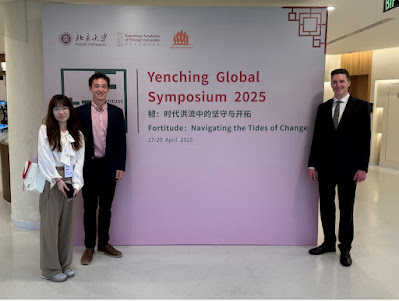Faculty Spotlight: Professor Gaye Christoffersen
 |
| Professor Gaye Christoffersen |
I am sure there are individuals who are unaware of the role energy security plays within modern day society, so I was wondering if you could just very briefly touch on that.
Very simply put, it is a reliable and stable supply of energy at a reasonable cost.
Why is energy security important in the world we live in today?
Industrialized countries require a lot of energy for their factories and transport sectors. In addition, there are also residential and commercial uses. However, there are many different forms of energy for each of these uses. For example, the transport sector is reliant upon oil. Coal and natural gas play a role in power generation.
What are the biggest challenges that China is facing in regards to energy security and renewable energy?
The biggest challenge for renewable energy in China, which is decades old, has been the policy differences between the oil and coal industries on one side and energy reformers on the other side, who are often found in the National Development and Reform Commission (NDRC) and the Energy Research Institute (ERI) under the NDRC. The “oil faction” has had significant influence upon issues such as resisting higher emissions standards for gasoline. With regards to the coal industry, referred to as “King Coal” because of its power, it has been hard to limit the number of coal mines. Coal combustion is a primary contributor to China’s pollution. However, the NDRC has tried to promote alternative energy, reduce coal emissions, and increase utilization of natural gas, a cleaner fuel. Yet, there is a consistent struggle between the oil and coal factions and the energy reformers such as the NDRC. The anti-corruption campaign has targeted the oil and coal industries which may end up limiting their power.
In China in the coming years, what do you see emerging as a leading form of renewable energy?
Wind power is China’s success story, as it generates increasing amounts of their total energy. In 2012, wind power constituted 5% of China’s installed electricity capacity. In addition, China has been very successful at producing solar panels, but has had difficulties connecting both solar and wind to the grid. Chinese production of solar panels has been export-oriented, leading to trade disputes with the U.S. and the EU. However, in recent years China has been increasingly installing solar domestically. For example, if you travel to Shanghai, you are able to see households along the way which have solar panels on their roofs. This is commonly seen in major cities.
To read the rest of the interview on the SAIS Observer website, click here!


